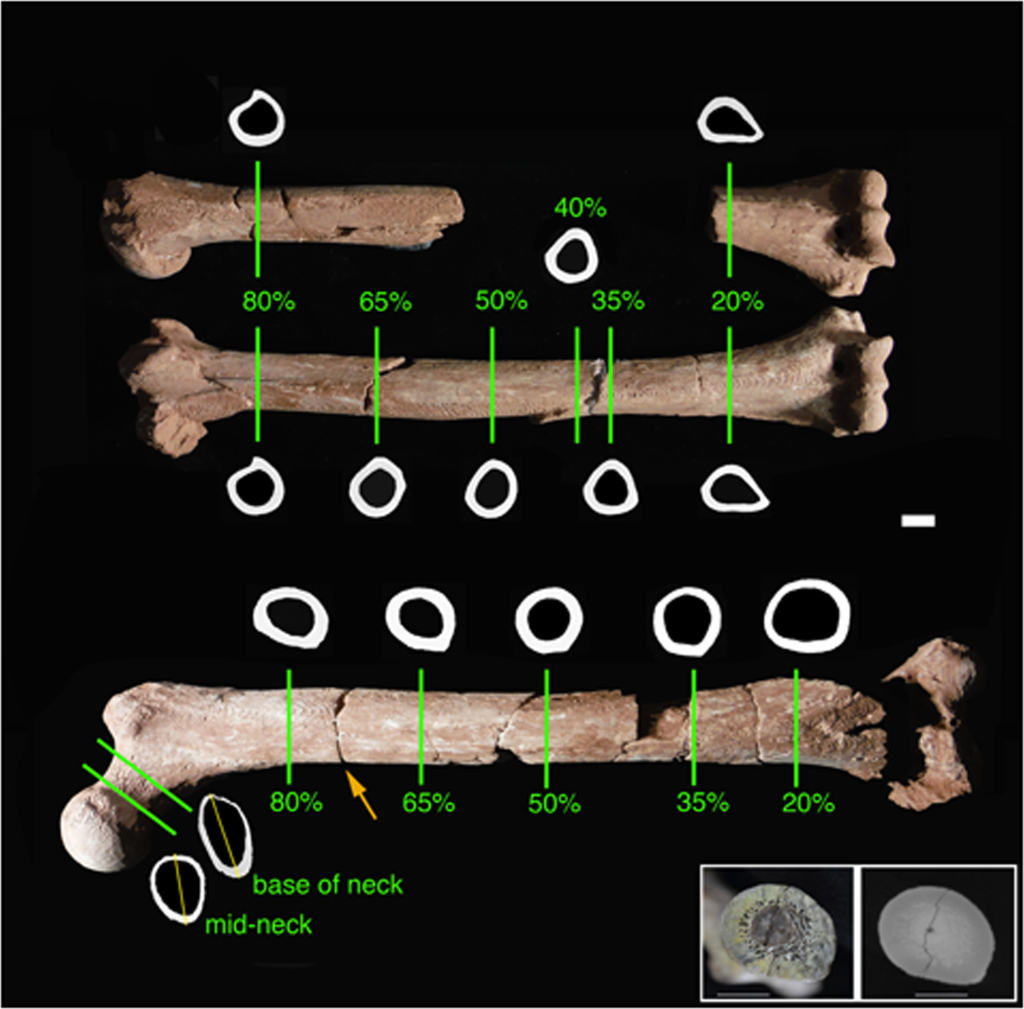
Limb bone structural proportions in A.L. 288-1 (“Lucy”)
(Image credit: Christopher B. Ruff; M. Loring Burgess; Richard A. Ketcham; John Kappelman)
New study gives insight into the lifestyles of early humans – with the help of ‘Lucy’, the famous 3.18 million-year-old Australopithecus afarensis fossil discovered in Africa. Bone analysis of Lucy’s upper arm and upper leg bones reveals that the relative strength of the Australopithecus limbs was between that of humans and chimpanzees. These findings also suggest that Lucy and her relatives had stronger arms and a less efficient gait than modern humans, thus leading researchers to the conclusion that early hominids likely spent more of their time in the tree canopy.
Authors:
Christopher B. Ruff, M. Loring Burgess, Richard A. Ketcham, John Kappelman
Corresponding author:
Christopher B. Ruff, Center for Functional Anatomy and Evolution, Johns Hopkins University School of Medicine, Baltimore, Maryland, US
Original paper published in PLOS One on November 30, 2016.

